| Home -> Other California History Books -> Panama-Pacific International Exposition - Popular Information - Text | |||
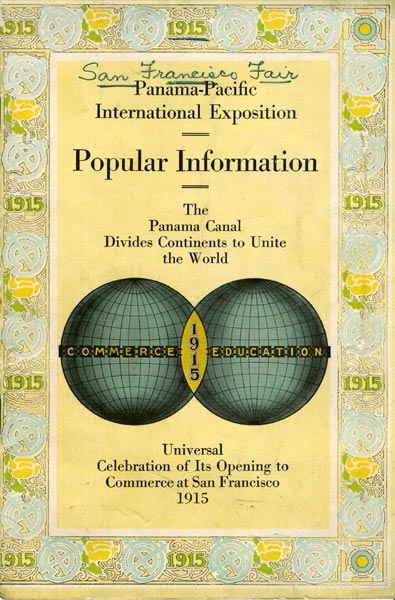 |
|||
|
Panama-Pacific International Exposition
Popular Information The Panama Canal Divides Continents to Unite the World Universal Celebration of Its Opening to Commerce at San Francisco 1915 |
|||
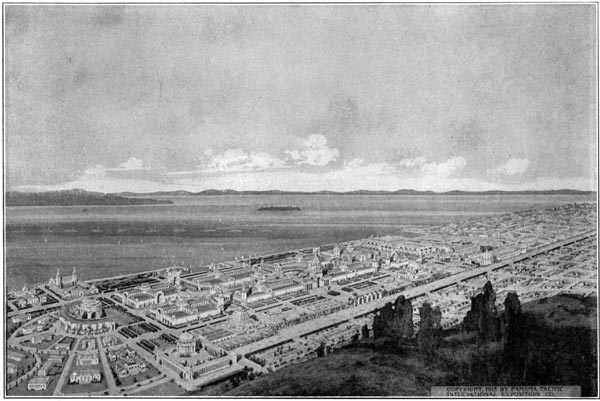 View of Exposition from Presidio Heights |
|||
|
Panama-Pacific International Exposition
Popular Information 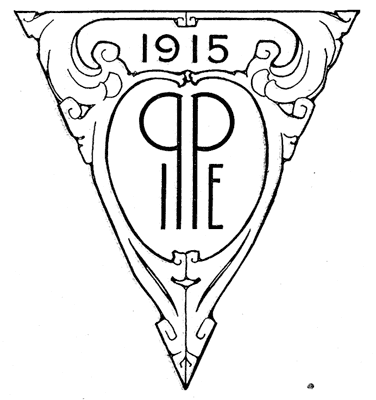 San Francisco |
|||
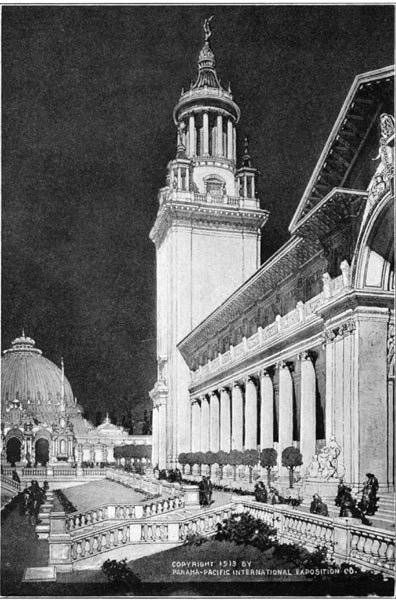 Part of Education Building and Court of Palms looking towards Horticultural Building |
|||
|
The year 1915 will be historic. It will see the lofty fulfilment of two world achievements, which, side by side, will give unchallenged place to the United States of America in the Olympiad of nations: one the official opening of the Panama Canal; the other an International Exposition which is to celebrate that event of such gigantic import, mark the conquest of well nigh insuperable difficulties, and after many ages warrant the prophecy of the poet Seneca:
"The time shall come in the long course of years When ocean shall strike off the chains from earth And a vast world be opened." The Exposition and Its Reason The Exposition is an epoch-marking event. It crowns the completion of a herculean task, the final victory in man's most gigantic battle with Nature. Where others failed, thousands died and nations retreated, America has fought against tides and torrents, pestilence and jungle, tropic river and rock-ribbed mountain, and won. Worthy to rank with the names immortalized on Bunker Hill and Gettysburg are the names of Gorgas, the doctor; Goethals, the builder, and thousands of sturdy, red-blooded sons of America who having vanquished disease, chained rivers and leveled mountains are making a pathway for nations from ocean to ocean. It is no mere commemoration but the actual celebration of the union of world seas, and the wedding gifts are the gold, frankincense and myrrh which the opening up of new trade routes will offer with open hand. It is the closing part in the Triology of the World's Waterways, which had its beginning in the circumnavigation of the Cape of Good Hope, its development in the completion of the Suez Canal, and now its climax in the Panama Canal, America's greatest gift to civilization. While each of these has stupendous influence on history, this, the last and greatest, will be the most far-reaching in its results. It will annihilate distance, wipe out the width of two continents between New York and Yokohama, make the Atlantic seaboard and Pacific Coast neighbors, and bind Europe, the Americas and Asia into one brotherhood. It promises the fulfilment of man's loftiest dreams of world-commerce, world-friendship and world-peace. Its World Character Nothing less than a world celebration can fittingly mark such an hour as this. Every land and every people are equally and vitally concerned in it. The achievement is one of universal and enduring influence, its recognition must be world-wide. But on some land must be conferred the high honor of summoning the nations to its solemnization. This is America's honor, America whose brain and brawn, whose faith and courage, whose genius and sacrifice have won this consummate victory for mankind. Up to this hour, America has held three International Expositions, each of these commemorating strategic, national events: Philadelphia in 1876, the birth of Independence; Chicago, 1893, the discovery of America; St. Louis, 1904, the peaceful conquest of the West. This is the fourth, this marriage festival of seas and peoples. All other International Expositions have celebrated national events. This is the first World Exposition man has ever built to celebrate an international event, greatest in motive, most far-reaching in scope and must be most brilliant in splendor. Its Site To San Francisco, America has sacredly delegated the Nation's task of building this World Exposition. The responsibility is overwhelming. Only a city which has risen within less than a lifetime from a lonely spot on a deserted ocean to a cosmopolitan metropolis of world influence, only a city the heir of all yesterdays and which faces the world's tomorrows, only a city which has battled with Nature's sternest forces and conquered, and towers today in grandeur and magnificence undreamed of before, only such a city could meet such responsibility as this, but such a city is San Francisco. Well able is she to be the hostess of the World, this newest built, most modern and up to date of cities. On her broad streets and amid her stately buildings she proffers the best conditions of life which civilization has to offer, while May-time lingers through the months and winter forgets to come. The paths of rail and sea can land the world at her gates, her hospitality can take adequate care of all the untold thousands, and with all the wealth of food, of sea and land at her doors, no one need hunger. Its Scenic Setting The surroundings of San Francisco add their full quota to the attractions of the city itself - the city of seven hills, from which so many scenic vistas can be enjoyed. At her feet stretches the Bay of San Francisco, earth's most majestic harbor, on whose bosom all navies of all nations can assemble, all ships of all seas anchor, on whose shores live a million men and women and whose background is stately mountains and whose entrance the far-famed Golden Gate. No Exposition ever had such a marvelous setting as this. Its Environment The whole bay region is a playground unsurpassed. On graceful yacht, speeding motor-boat or spacious steamer there are fascinating trips over the smooth waters of the bay itself to greenclad islands, the Navy Yard, Naval Training School, fishing grounds, and up the inland rivers. There will be the magnificent memorial ocean drive that will skirt the harbor and parallel the Pacific. It will pass from Harbor View to the site of the Exposition, through the wooded slopes of the Presidio, by frowning cliffs to Lincoln Park, the most beautiful observation point of the bay, then along the ocean to Golden Gate Park. Long after the Exposition has become a memory this Boulevard will remain a notable addition to the treasures of the West. Then come the beauties of Golden Gate Park with its floral tributes gathered from all over the world; the ascent of Mt. Tamalpais and the walk through Muir Woods; the trip along the Ocean Shore Railroad or a visit to University of California and its famous Greek Theater; a journey to Stanford University, San Jose and the Valley of Santa Clara, the paradise of blossoms and fruit; or the visitor may take an automobile ride to explore Mt. Diablo or a journey down the Coast to realize the charms of restful Del Monte and Monterey's sea drive, the great redwoods of the Coast Range and the rocky sea-caves of Santa Cruz, or turning northward, look on a land of lakes, fish in the Russian River or be lost in the Humboldt forest. If that be not enough, it is but a day or a night to the southeastward and there awaits him the eternal silence of the Giant Forest of the Sierras and that Cathedral of Nature, the far-famed Yosemite whose El Capitan is like the Judgment Throne and whose Half Dome is the Sounding Board of the Ages, while to the northeast but a day or so more is the marvelous Yellowstone, and to the southeast the awe-inspiring Grand Canyon of the Colorado. There are in fact in the immediate vicinity of San Francisco sufficient trips to keep the visitor delighted for months, all of them subject to the same wonderful climatic conditions which make California so essentially a livable and lovable country, and San Francisco itself, with an average temperature of 59 degrees and winter 51 degrees, the most comfortable and desirable resort for either season of any great city in the world. Her summer is an English, French or German summer, without the rains; her winter, a western Riviera. Its Approach There are two main avenues of approach by which to reach your San Francisco welcome - by water or by land - each in its own peculiar way extraordinarily beautiful and entirely fitting. Overland, should he come from the north, the visitor's way lies through ways in some respects the most interesting and spectacular country of which the West can boast. Through Oregon, the land of roses, it passes south until it enters the region of the Klamath Lakes, full of Nature's mystery and splendor, where Crater Lake holds justly pride of place, its wonderful sapphire color mocking the sky above. Still further south is seen looming up in all its solitary grandeur and distinction snow-capped Mount Shasta - a sight impossible to better, impossible to forget. Hardly have its beauties been fully realized when the traveler is out of mountain land and among the green and flowers of Sacramento, the capital city of California, with San Francisco not far off. Its Gateways Or you can enter from the east by the highland gateway among the mountains of Nevada, open wide to receive you, and shut out the memory of those lonely desert stretches where Nature seems to halt aghast in silent horror, which only coyotes dare to break with their shrill approval. You will pass Salt Lake City, that city of romantic inception and strenuous endeavor; Ogden with its remarkable canyon; you will wend your way across Salt Lake, that marvelous stretch of inland sea, while Lake Tahoe, so justly called the pearl of the Sierras, invites you close at hand. Swing around a shoulder of one of the deep canyons that flank the road on every hand, and you will realize that California is around you, and in a few hours you will have passed through one of Nature's most wonderful kaleidoscopes. She takes you from cold desolation to the sunshine and flowers of the Pacific Coast, and, passing, affords you many a glimpse of foreign climes: first, a view of Switzerland, then a spot that Corot would have loved to paint; further, a landscape after Constable's own heart; then down a stretch of Italy, till you change from train to ferry, cross the bay and see the glittering object of your journey. Then there is the approach from the south, across Arizona, that wonderful land of vivid contrasts, which holds a fascination and mystery all its own. There Nature in the Grand Canyon seems to have put forth her utmost efforts to baffle all attempts of human powers of description. Leave that behind and Southern California lies before you, where you may revel in the beauties that crowd around on every side, bathed in the sunshine of the Golden West. From there two ways to the Exposition City are offered: one up the coast through the land of the Missions, which, with their architectural beauties, tell in so graphic a manner the details of the history of their past, in striking contrast to the bustling cities, romantic in name and atmosphere, and modern in life, which have grown up to take their place - San Diego, Los Angeles and Santa Barbara. The other road will give you every chance of realizing the richness which California spreads out with lavish hands before you. It passes up through the San Joaquin Valley, which, with the Sacramento Valley, forms the great central garden of the State. It gives you choice of every fruit and every kind of grain, and forces in most peremptory manner the conviction of the productions and productiveness of California. The last great avenue of approach is by sea, and, if the spirit moves you, you can pass through the great Canal, up along the Pacific Coast amid its many islands till before you shows that perfect entrance, the Golden Gate; enter through its portals and the gorgeous panorama of the Exposition will unfold itself as you drop anchor beneath its walls a worthy approach to such a city of palaces, built on a site that knows no betterment. Its Splendor Before you the wonderful facades of the Exposition buildings stretch along the main sea entrance, gleaming in the sunlight of a California day, their dazzling outline silhouetted against the background of the terraced amphitheater of the city itself, all around the brilliance of the harbor, while away behind arises the splendid contour of the Marin hills, crowned in the distance by the grand dignity of Mount Tamalpais, a fitting guardian of such a scene. Its Palaces Nor will the buildings be out of harmony with so spectacular a setting, the children of the brains of the most brilliant architects that America can boast of; in their development is seen the accomplishment of the hitherto impossible - a uniformity and continuity of architecture in the buildings of a World's Fair which house the exhibits of the nations, and reflect the spirits of unrelated lands. Agriculture, Transportation, Manufactures, Liberal Arts, Horticulture and Fine Arts will each have its palace. In the inner courts -Festival Court, the Court of Four Seasons and the great Court of Honor - every opportunity will be given for individual treatment; the general outline will in feature and character blend together, being completed by a wealth of California flowers and the most exquisite of landscape gardens, from East as well as West, for Japan has already expressed her desire to participate and leave her exhibit as a very beautiful reminder of a nation's friendship. The dominant note is color, color - not in patches here and there, but grouped in huge massed bands of reds and blues, greens and golds, in perfect harmony - will play the most gorgeous symphony ever offered to the eye of mankind. Looked at from one of the hills to the south of the city or from across the bay on the Marin Heights to the north, it may well call up memories of the Rhine in the fall of the year, when Nature is dressed in the wonderful tawny russets and brilliant wine-red textures of the terraced vines, fringed with the blue-green ribbon of the river itself. There will be the charm of almost personal acquaintance for those who have lived among the highlands of Scotland or the English lakes, soft sunshine on the Riviera shore or the Bay of Naples, or lazed away the happy days among the Italian lakes, while the traveler from Rio will distinctly call to mind the sister wonder of that harbor. It is a fitting theater from which to watch the drama spread out before it on the waters of the harbor, for the reason for the Exposition is the Panama Canal and its effect on the maritime world, and possibly the most significant part of the World's Fair will be the presence of a world's fleet riding at anchor to do it honor. Its Scenes Entering this golden city, its splendor will grow upon you. From the gay concession park with the world's merry life grouped about the beautiful model of the Trianon at Versailles, through the Boulevards, the Esplanade by the Sea, the grand Court of Honor and the immense majestic palaces to the Galleries of Art, we may wander among the most marvelous panorama of the civilization of today of which mind can conceive. Only the living world will loom large here, for the achievements of the present decade will have the places of honor, and not only the achievements but the processes which produced them will be seen. It will be a University of Universities; its educational value is immense. Yet the insistence on quality rather than quantity, the concentration of palaces and exhibits in a great center will make it less wearying to see than any Exposition of the past, while far greater its vision of world life. Beyond the glories of the great halls and beautiful courts will stretch the fairyland of California's Building, the historic edifices of the States and the palaces of Nations. Outside the doors of this City Wonderful there will be a panorama of never-ending brilliancy, aeroplane meets, athletic contests, International Military reviews, illuminated fleets and oriental pageants; beauty, pleasure, splendor, life, art, glory, grandeur everywhere. Its Welcome To this great Panama-Pacific International Exposition San Francisco welcomes the world. Where England's Drake once bared his head to God and Mission bells of St. Francis rang out a new message to man, rising through tragedy into a new life, she now stands before the world jeweled with her sunlit bay and all the wondrous beauty of the Golden Gate, gazing with serene eyes on the future, proud and fully prepared for all the world to visit. Hers is no spirit of mere boastfulness, but of that true assurance which can be born only of the experience of great trials and tribulations, and of that patriotism which has steered her through troubled seas. When the day arrives, with that same calm confidence, and with all the big hospitality of the West to make her invitation sincere, she will speak her one word of welcome - Come. |
|||
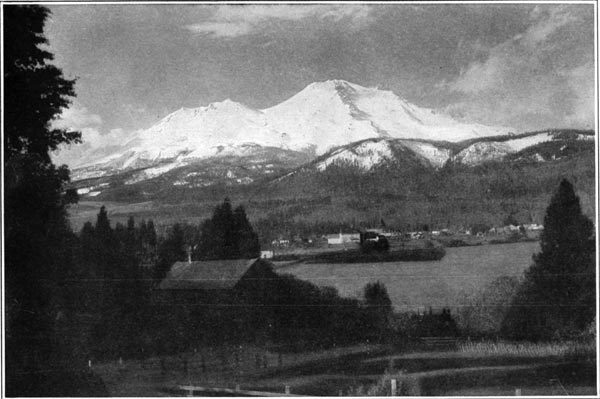 Mount Shasta California |
|||
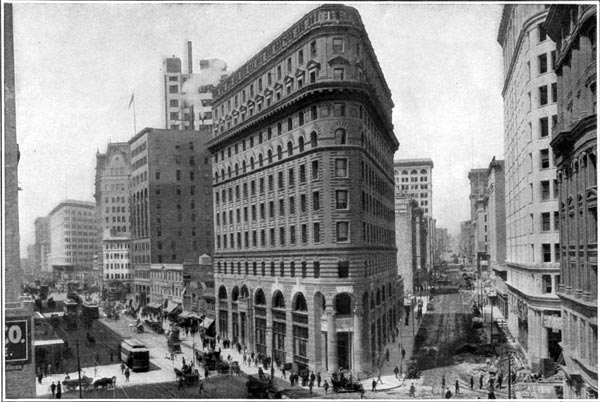 Market Street at Post Street San Fancisco |
|||
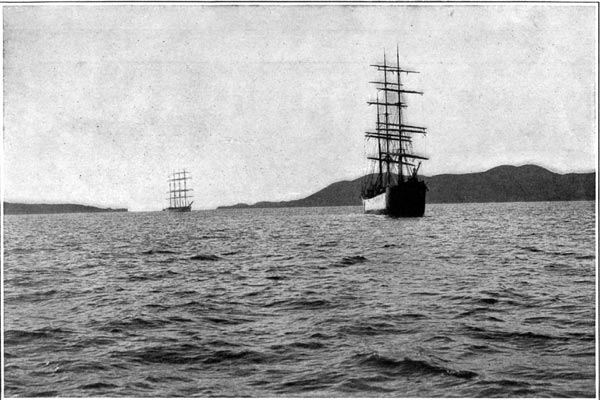 The Golden Gate San Francisco |
|||
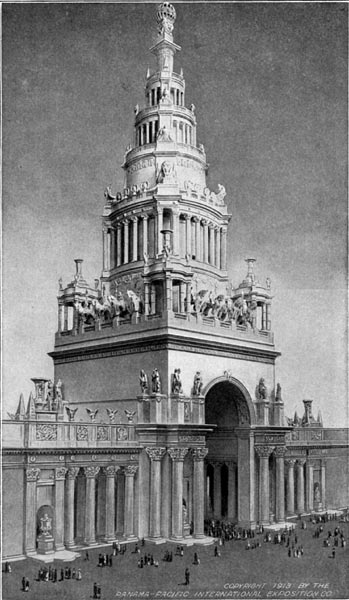 Tower of Jewels - Height 426 feet |
|||
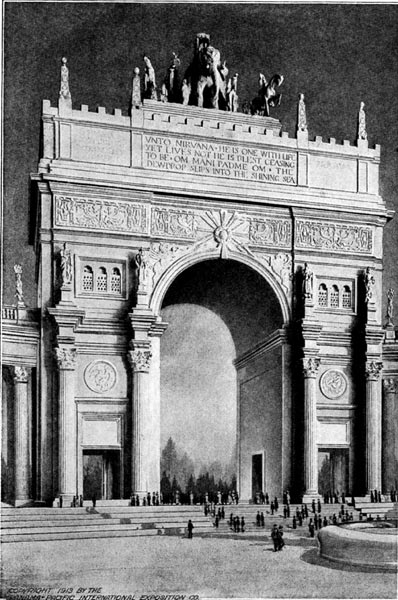 Triumphal Arch - Court of Four Seasons |
|||
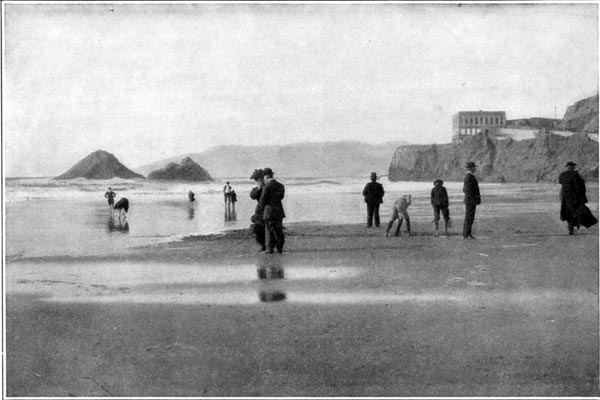 Cliff House - San Francisco |
|||
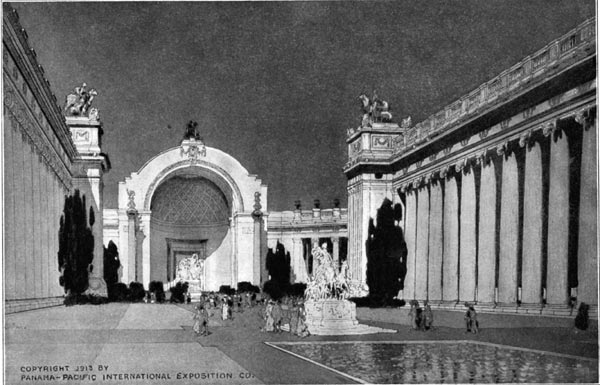 Nich in the Court of Four Seasons |
|||
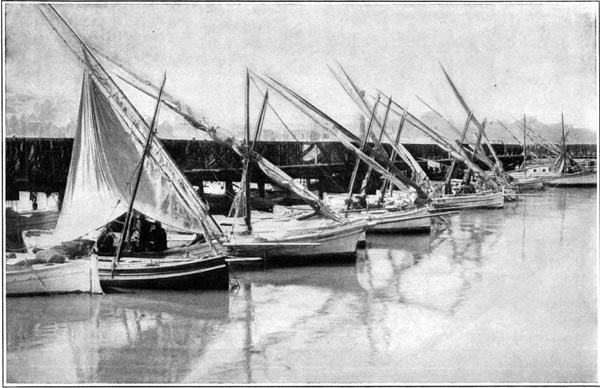 Itailian Fishing Boats - San Francisco |
|||
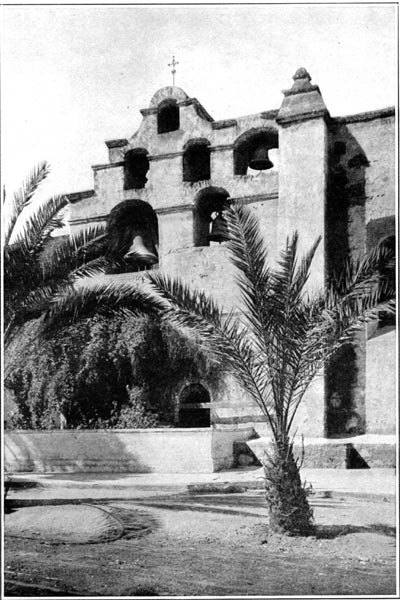 Mission San Gabriel California |
|||
 |
|||
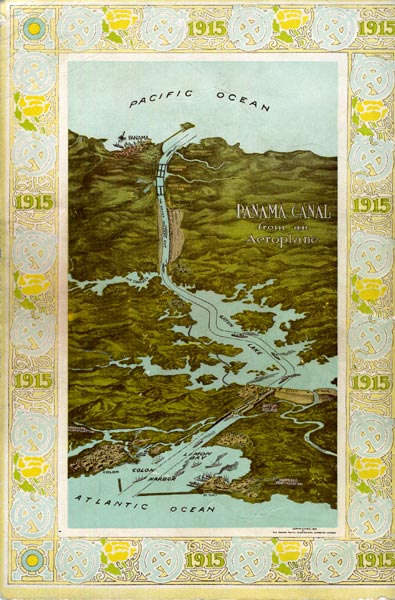 |
|||
|
|
|||